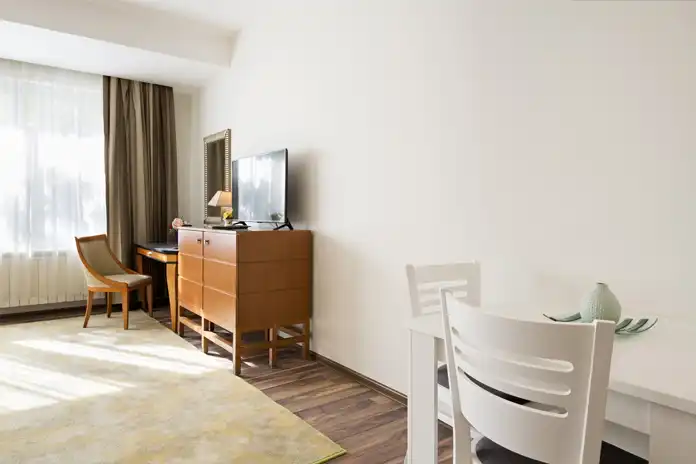In a world that constantly bombards us with advertisements, consumerism, and the pursuit of more, the concept of minimalist living offers a breath of fresh air. Minimalism is not just about decluttering your physical space; it’s a way of life that encourages intentionality, mindfulness, and a focus on what truly matters. If you’ve ever been curious about becoming a minimalist and how to live with less, this guide is for you. Here, we’ll cover what minimalism is, along with a few practical tips on embracing the lifestyle.
What is Minimalism?
Living a minimalist lifestyle means making deliberate choices in various aspects of your life to reduce distractions and purge things that don’t bring you joy. Some key pillars of a minimalistic lifestyle include simplicity, mindfulness, intentionality, and financial freedom. At its core, minimalism is about simplifying your life by reducing excess and focusing on what brings you genuine happiness and fulfillment. Minimalists intentionally choose to own fewer items, as they place a higher value on experiences and relationships than material possessions. Those who embrace this lifestyle tend to say they live with less stress, more financial stability, and a greater overall well-being. While it does focus on getting rid of things, minimalism doesn’t mean that you need to throw everything away to start living. Instead, it focuses on only keeping things we most value to make room for other things that matter in life.
9 Tips to Live Minimally and Reclaim Your Space
Having a minimalist home allows you to reclaim your space and avoid hoarding things you don’t use or no longer need. To help you better understand, consider the following minimalist lifestyle tips that will help you live with less and regain control of your space.
1. Focus on Joy
One way to live more minimally is to try and focus on joy. This part of the movement was taken straight out of Marie Kondo’s book, “The Life-Changing Magic of Tidying Up.” In it, she mentions asking a pivotal question when decluttering your home: “Does this spark joy?” If it does, you’re encouraged to keep it. However, the goal is to get rid of anything that doesn’t bring you joy or help improve your life. This helps you declutter your home and mind, as you surround yourself with things that only bring you genuine happiness. Moreover, the pursuit of joy in minimalism extends beyond material possessions. Since oftentimes, “stuff” distracts us from our core values, you’ll want to commit to being intentional and purposeful with your purchases.
2. Try a Capsule Wardrobe
A capsule wardrobe is basically a curated collection of versatile, high-quality clothing items that can be mixed and matched to create various outfits. It supports a minimalist lifestyle in that you won’t have a bursting closet filled with clothes you don’t like or things that no longer fit, and it can help reduce decision fatigue when getting dressed each morning.
To achieve a capsule wardrobe, donate or sell items that no longer fit or align with your style. Over time, you’ll find that maintaining a capsule wardrobe not only saves you time but also helps you develop a more refined and intentional personal style. However, if you feel overwhelmed and don’t want to get rid of all of your clothes while experimenting with a more minimal lifestyle, rent a self-storage unit to keep your excess clothes out of the way but within arms reach.
3. Choose Quality Items
Minimalists also choose quality over quantity, as this allows you to spend less over the years and reduce the need to repurchase the same items year after year. Plus, when you prioritize quality, you’re more likely to invest in items that are built to last. These products tend to be more durable, functional, and aesthetically pleasing. While they may come with a higher price tag upfront, they are often more cost-effective in the long run because you won’t need to replace them as frequently. Quality should apply to everything—not just clothing. When shopping for items like furniture, appliances, or electronics, look for brands known for their durability and craftsmanship. Switching to high-quality products may not happen overnight, but being cognizant about what you’re buying can help save you money over time.
4. Declutter and Downsize Regularly
Even the most dedicated minimalists can have difficulty letting go of things. However, regular decluttering sessions are a fundamental part of creating a minimalist environment. To help you keep things under control, set aside time periodically—whether it’s monthly, seasonally, or annually—to evaluate your belongings and give some things away. Start in one area of your home and work systematically through each room. As you go through your possessions, ask yourself critical questions:
Do I use this item regularly?
Does this item hold sentimental value?
Does this item align with my current lifestyle and values?
Can I repurpose or donate this item to benefit someone else?
Can I sell this item?
Try to be ruthless in your decision-making, and don’t hesitate to part with items that no longer serve a purpose in your life. However, if there are things you really can’t decide about, consider putting them into a storage unit and see whether you miss them or not. If you want to have a minimalist kitchen, but don’t necessarily want to throw away your expensive kitchenware, pack them up in boxes, label them, and store them in your storage unit. You can create a clutter-free home without making the major lifestyle change of giving away everything you own.
5. Balance Purchases
Another way to live a decluttered life is to try and balance your purchases. This means that every time you purchase one item, you should try to get rid of one item. This is often called the “one in, one out” rule and helps you maintain an equilibrium in your home, making major decluttering projects less stressful. It can be applied to any new item you spend money on, whether that’s clothing, electronics, furniture, household goods, or home decor. As long as you’re adopting this approach, you can maintain the benefits of living with less and reduce your reliance on material things. Oftentimes, you may find that rather than purchasing something new, you may prefer to spend money on an experience or do something with your friends or family.
6. Restrict Social Media
In today’s digitally connected world, social media can be a significant source of clutter and distraction. To help, consider conducting a social media audit to make life easier. Evaluate the platforms you use and the accounts you follow to strip away those that no longer serve you. Unfollow accounts that are getting in the way of your happiness or productivity, and try to limit the time you spend on apps each day. Designate specific times during the day for checking social media, and avoid mindless “doom scrolling” during productive or quality time with loved ones.
7. Go Digital
Another great way to practice minimalism is to go digital. This could be digitizing movies, music, photos, and even important documents. In doing so, you’ll spend less time sorting through file cabinets and reduce the anxiety that happens when you toss something in the recycling bin on accident. However, living simply also applies to your digital life, so try to keep things organized. One option is to scan and digitize important documents such as bills, receipts, and legal paperwork. However, if you need to keep hard copies of anything, don’t throw them away just yet. Instead, consider storing them in a self-storage unit with other household items you aren’t actively using.
8. Reduce Online Clutter
While there are noticeable benefits of digitizing your life, online clutter can still affect our mental health. So, start by decluttering your email inbox. Unsubscribe from newsletters, junk mail, and promotional emails that no longer interest you. Then, review your bookmarks and saved content, and delete items that are no longer relevant or useful. Finally, be mindful of your digital subscriptions. Periodically review your streaming, app, and online service subscriptions, canceling those you no longer use or need. By reducing online clutter, you’ll create a digital environment that is more conducive to focus, productivity, and a minimalist mindset.
9. Be Patient
Living a minimalist lifestyle is a journey, not a destination. While it can add value to your life, it’s important to be patient during the process. For example, you may find it difficult to part with certain items, or you may wake up one day and want to wear something you’ve gotten rid of. Keeping a self-storage unit with your belongings can help you reduce how much stuff is in your home without necessarily living with the initial increased anxiety of getting rid of everything you own.
Whether you live in a small home and want to reclaim your space, or you’re simply interested in living with less stuff, a minimalist approach can offer several benefits. However, if making the decision to get rid of half the amount of items in your home scares you, you can still enjoy a simplified home with a self-storage unit from The Lock Up Self Storage. Our temperature-controlled self-storage units can help you declutter without having to donate or throw away your beloved belongings. We offer a variety of self-storage units in varying sizes to meet your needs and help you enjoy your livable areas in a smaller space. With our flexible leasing options, you can test out a unit with short-term rentals and extend into long-term rentals as needed. All of our units are climate-controlled and offer stable humidity levels to ensure that all of your things stay in great condition. Our facilities are also protected with top-of-the-line security features like perimeter alarms, gated access codes, and 24/7 CCTV. To learn more about our self-storage units at The Lock Up, give us a call today at 1-866-327-LOCK or stop by one of our locations for a tour of the facility.



















